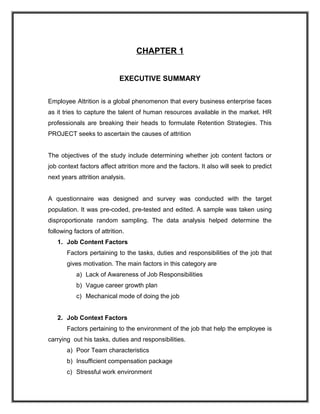The document provides an overview of a study on employee attrition. It discusses how attrition affects businesses and the objectives of studying attrition factors. A survey was conducted to determine key job factors that influence attrition, including job content, responsibilities, career growth and job context such as work environment and compensation. The study aims to identify whether job content or context has a greater impact on attrition and help predict future attrition rates. It also provides background on attrition in the business process outsourcing industry and common reasons why employees leave their jobs.































































